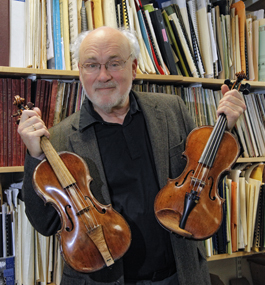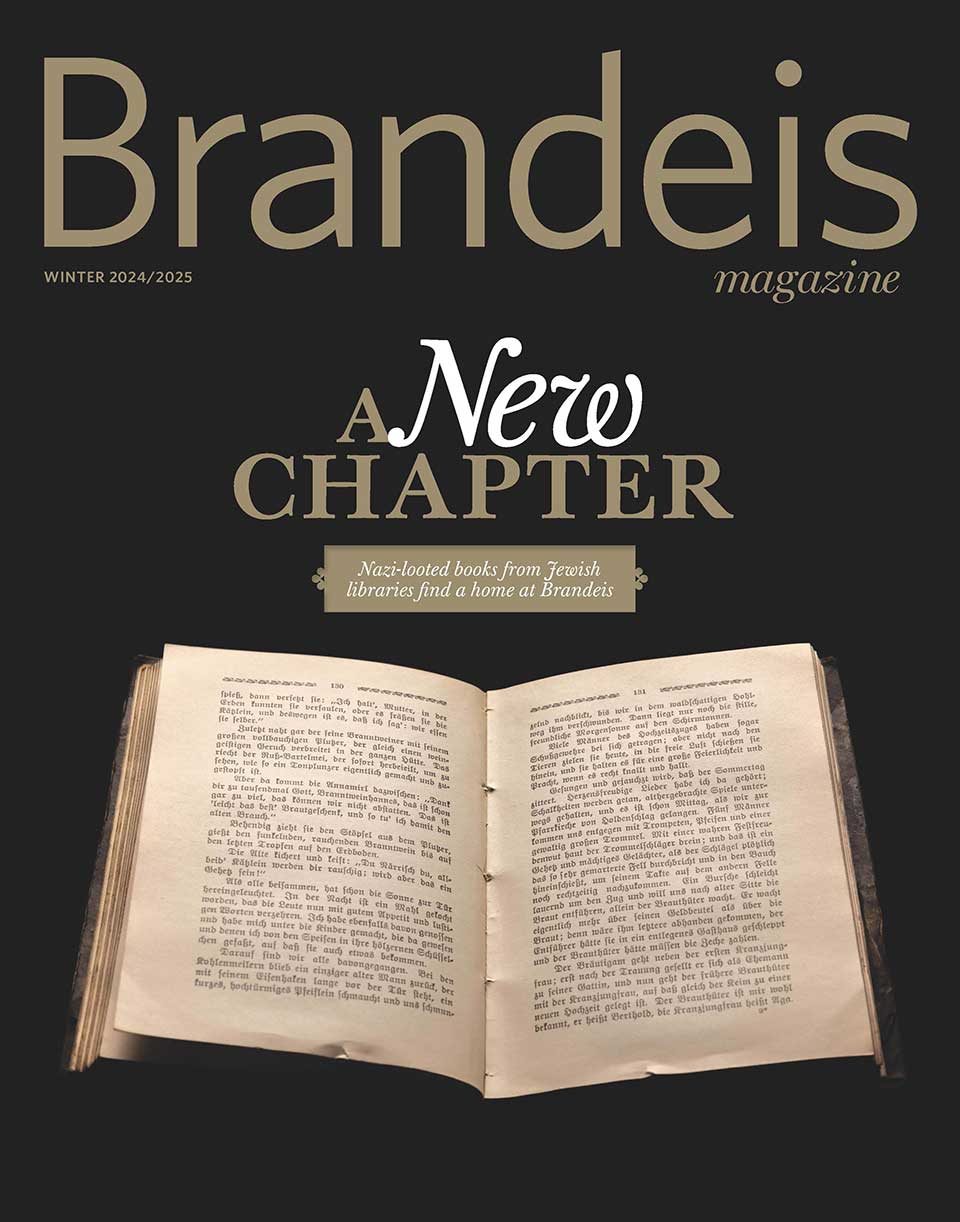Stepner's Graceful Bow to the Past, and Present

Mike Lovett
OLD FRIENDS: Stepner with a period violin (left) and a modern one.
by Susan Piland
Daniel Stepner, professor of the practice of music at Brandeis and longtime first violinist in the Lydian String Quartet, plays a “modern” violin crafted in 1727.
And a “period” instrument made by the German luthier Sebastian Kloz, circa 1740.
What sounds like a twist in a time-travel story is actually a window into the violin’s history. For hundreds of years, violins made in the 17th and 18th centuries have been modernized — adapted so their sound can fill concert halls that have grown steadily larger since they were first built in the 1700s.
The structural changes include “strengthening internal supports and modifying the bridge to accommodate metal-wound strings and higher, more penetrating tuning standards,” Stepner explains. “To withstand the added tension, the neck is angled a little bit. The modern bow is heavier. All these things make for a bigger sound.”
By the same token, any modernized violin can be made “old” again by reverting to the baroque-era neck angle, lighter internal supports, and gut strings; using a lighter bow; and playing at the pitch Bach used, a half step lower than today’s standard. “The result is a more relaxed sound,” says Stepner. “Individual notes ring longer, and you can create the sense of counterpoint more easily, which is particularly appropriate for Bach.”
Stepner is a master of violins both old and new. He plays his Kloz on his critically acclaimed two-CD recording of Bach’s Sonatas, Partitas and Chromatic Fantasy and Fugue, released by Centaur last summer. The album also features Stepner playing two other spectacular baroque instruments — a 1641 violin made by Nicolo Amati owned by the Museum of Fine Arts, Boston, and a 1693 violin made by Antonio Stradivari owned by the Metropolitan Museum of Art.
The Strad, worth millions of dollars and sent to the recording session at the MFA with a police escort, was modernized before the Met transformed it back into its period authenticity. Out of the 500-plus Strads that survive, it is thought to be — incredibly — the only one currently configured in baroque form.
Violin making is not a forgotten trade, Stepner reports. “I own two violins by a living maker in Vermont that I like very much,” he says. “And there are some good instruments coming from China these days.”
Yet, for most serious musicians, the Stradivarius remains the ne plus ultra of violins. To try to explain its unique tone, some experts point to the volcanic ash used in the varnish. Others note the way a Strad’s back is carefully graduated in thickness, creating “an incredibly efficient woofer,” Stepner says, “which can project quality of sound over a long distance.”
When he’s playing early music, Stepner prefers to use a period violin. “The Bach Sonatas and Partitas, the most challenging music I know,” he says, “are physically less punishing to play on a baroque violin, because you don’t have to press as hard to get a good sound.”
For music by Beethoven and later composers, he uses a modern violin, as he did on the Lydian Quartet’s recently released three-CD recording of Beethoven’s late quartets; his upcoming CD showcasing solo-violin music by 20th-century masters, which will be released in February; and another CD containing violin works by Brandeis composers, to be released this spring.
“People ask me if it’s hard to switch back and forth between a period and a modern violin, to deal with the differences in pitch and pressure,” Stepner says with a smile. “And I say, no, that’s the easy part. It’s just that playing either one feels impossibly challenging at times.”
